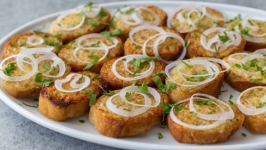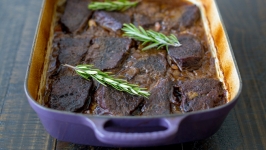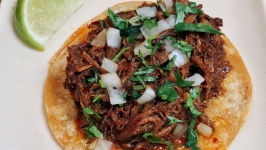Tale of an Ale: Freewheel Brewing Co.
Malcolm McGinnis found his way to beer through chemistry while working on his PhD. “My graduate advisor said every biochemist worth his salt should be able to brew his own beer,” he says. “I started brewing in graduate school in the late ’80s.”
Brewing remained a home passion for 25 years until the sale of McGinnis’ biotech company put him in the position to consider brewing professionally. He partnered with two other Menlo Park dads he met through his kids, Larry Bucka and Gary Waymire, and a former business associate from his biotech days, Englishman Pete Krausa. The four launched Freewheel Brewing Co., in Marsh Manor, to produce local versions of English-style cask-conditioned ale.
“When we looked at the beer business and decided what to do, it seemed hard to distinguish yourself in IPA,” says Bucka, referring to the popular India pale ale style. “We thought about beers we enjoyed in our travels, and the beers in the UK were fantastic.” They settled on English cask-conditioned ales. “They’re local, they’re flavorful, they’re fresh,” says Bucka. “It’s a style of beer you can’t really ship anywhere.”
The dedication to maintaining true English technique is clear throughout the partners’ approach. “We import all our grain from the UK,” says Bucka, and “use English yeasts. We even treat the water to make it similar to the UK.” English water is apparently harder than Hetch Hetchy water, so Freewheel hardens the water before using it for beer.
The beer is even served warm, or at least warmer than Americans are accustomed to. “Cellar temperature,” says McGinnis, “is slightly warmer than many places. It’s 50°,” compared to 38°F. for most American taps.
All of Freewheel’s ales are cask-conditioned in the English style. The process allows a secondary fermentation to create natural carbonation instead of relying on forced carbonation, similar to the methodology used to create Champagne through the traditional method.
Toward the end of the fermentation, where the grains’ sugars are being converted to alcohol, the process is halted by cooling the ale when it reaches an alcohol percentage slightly below the final target. After resting, the ale is moved to a conditioning tank where it rests for four days and then again to smaller casks, similar in form and shape to kegs, where it is allowed to warm up. This triggers a secondary fermentation, which creates natural carbonation.
“As with fine Champagne, the smaller the bubbles the better the wine,” says Bucka. “We get smaller bubbles. Better mouthfeel. That’s part of what we wanted to bring here: the experience of cask ale.”
In their effort to bring true English ale to the Peninsula, Freewheel has enlisted some UK-native collaborators along the way, and they’re clearly credited in the ales those collaborations have produced.
Keeping everything authentic to the English product they wanted to replicate, the team had their brewhouse designed and manufactured by a fabricator in the UK, where the primary assembly took place before it was shipped here and put together, the only one of its kind in the US.
“The guy that built the brewhouse also had a brewer’s degree from Edinburgh,” says Bucka, so when the brew house was complete “we brewed a beer together to pay homage to him.” The result is their Big V Amber Ale named for the fabricator, Vincent.
They also “collaborate with small brewers in the UK,” says Bucka. In fact, one of the four partners has moved back to England and works part-time on these efforts. “Our stout is an exact replication of one a [UK] brewery named Ironbridge makes. We had their head brewer out to California to brew with us.” There’s also Ironbridge Gold, and Ironbridge Hybrid IPA and Freewheel’s Green Jack Hybrid Bitter—which was developed with a small UK brewer called Green Jack—on the menu.
While many of the ales are named “bitters,” and there are degrees of bitterness in the finish of each, these beers are bitter only insomuch as the original concept of bitters, which were being compared to the sweet light beers that preceded them (think Newcastle). Their flavors emphasize the grains from which they are born, ranging from lightly hoppy to deeply malty and caramelized. The consistent element throughout is a light and refreshing character.
The ales also trend toward the lower end of the alcohol range (3.5%–5.65% alcohol by volume), which makes it easier to enjoy them as they are intended. “Easy drinking would be how I’d describe it,” says McGinnis. Add a basket of fish and chips, or a NorCal take on a pastie with butternut squash and leeks from the mid-sized menu for a pub-style taste of England in Silicon Valley.





